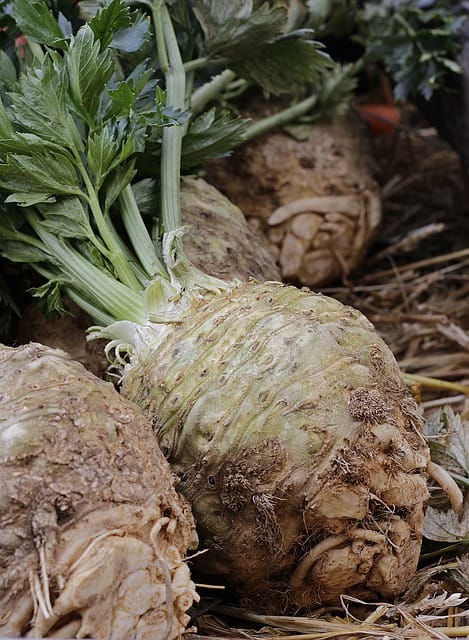How to grow Celeriacs
Welcome to our comprehensive guide on how to grow celeriacs vegetable

In this article:
Introduction
Welcome to our comprehensive guide on how to grow celeriacs vegetable. Celeriacs, also known as celery root, are a popular and versatile vegetable that adds a unique flavor to various dishes. With proper care and attention, you can enjoy a bountiful harvest of this nutritious root vegetable. In this article, we will provide all the necessary information you need to successfully grow celeriacs in your garden.
Understanding Celeriacs
Celeriacs belong to the same family as celery but are cultivated specifically for their edible roots rather than their stalks. They have a mild and nutty flavor, making them a great addition to soups, stews, salads, and even as a standalone side dish. Celeriacs are rich in fiber, vitamins, and minerals, making them a healthy choice for your garden and dinner table.
Choosing the Right Varieties
When selecting celeriac varieties, look for ones that are well-suited to your climate and growing conditions. Some popular varieties include 'Brilliant', 'Giant Prague', and 'Monarch'. Consider factors like the size of the root, disease resistance, and flavor profiles to choose the right variety for your needs.
Climate and Soil Conditions
Celeriacs thrive in cool climates and require a long growing season of approximately 120-150 days. They prefer well-draining soil rich in organic matter. The ideal pH range for celeriac cultivation is between 6.0 and 7.5. Before planting, amend the soil with compost or well-rotted manure to ensure adequate nutrients and moisture retention.
Preparation and Planting
Start celeriac seeds indoors 10-12 weeks before the last frost date in your area. Sow the seeds in a seed tray or small pots filled with seed-starting mix. Keep the soil moist and maintain a temperature of around 70°F (21°C) for germination. Once the seedlings develop their second set of true leaves, transplant them into individual containers. Harden off the seedlings gradually before planting them in the garden.
Caring for Celeriacs
Celeriacs require regular care to ensure healthy growth. They prefer full sun but can tolerate partial shade. Keep the soil consistently moist by watering deeply once or twice a week. Mulching around the plants can help retain soil moisture and suppress weeds. Regularly remove any yellowing or diseased leaves to promote air circulation and prevent the spread of diseases.
Watering and Fertilizing
Proper watering is crucial for celeriacs. They need consistent moisture to develop good-sized roots. Avoid overwatering as it may lead to rot and disease. Fertilize the plants every 2-3 weeks with a balanced organic fertilizer to ensure they receive adequate nutrients. Too much nitrogen can result in excessive leaf growth and small roots, so choose a fertilizer with a higher phosphorus and potassium content.
Controlling Weeds and Pests
Regularly inspect your celeriac plants for weeds and remove them promptly to minimize competition for nutrients and water. Applying a layer of organic mulch, such as straw or wood chips, can help smother weeds. Keep an eye out for common pests like aphids, slugs, and celery leaf miners. Use organic pest control methods, such as handpicking or introducing beneficial insects, to keep pest populations in check.
Harvesting and Storing Celeriacs
Celeriacs are typically ready for harvest 100-120 days after transplanting. The roots are mature when they reach a diameter of 3-4 inches. Carefully dig around the plants and lift the roots with a garden fork. Remove the foliage, leaving a inch of stem attached to the root. Store the harvested celeriacs in a cool, dark place with high humidity and a temperature of around 32-40°F (0-4°C). They can last for several months when stored properly.
Tips for Success
- Plant celeriacs in raised beds or containers if you have heavy or clay soil.
- Provide wind protection to prevent the plants from getting toppled over.
- Rotate the crop annually to prevent the buildup of soil-borne diseases.
- Consider companion planting with onions, leeks, or carrots to naturally deter pests.
- Monitor the soil moisture level regularly and adjust watering accordingly.
Conclusion
By following the steps outlined in this guide, you can successfully grow celeriacs and enjoy a bountiful harvest of this versatile and nutritious vegetable. With the right variety selection, proper care, and attention to soil and climate conditions, you'll be on your way to growing delicious celeriacs in your own garden. Happy growing!
